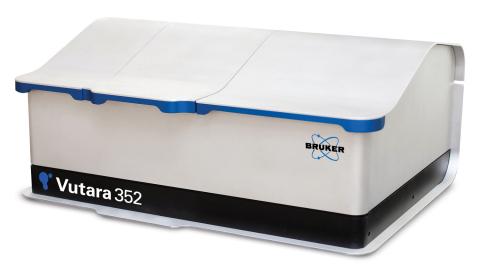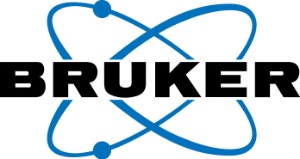SAN DIEGO--(BUSINESS WIRE)--At the 2015 Cell Biology ASCB Annual Meeting, Bruker (NASDAQ: BRKR) today announced the release of the first quantitative super-resolution microscope, the Vutara™ 352. The Vutara 352 offers speed, imaging depth, and resolution to deliver significant advantages over competing approaches, now also adding real-time quantitative capabilities. For the first time, this represents an entirely new dimension of functionality in super-resolution microscopy, including the ability to perform pair-correlation, co-location, cluster, and live-cell analysis with super resolution.
The Vutara 352 is now also compatible with Bruker’s Opterra multi-point confocal microscope, creating a unique combination of super-resolution and confocal capabilities, where both instruments are designed for high-speed imaging. This enables the visualization of large-scale, high-resolution structural context in correlation with super-resolution imaging in even the most challenging live-cell applications.
“Single molecule localization techniques are unique in that the images are constructed from discrete, molecular-scale events,” explained Stephen C. Minne, Ph.D., General Manager of Bruker's Fluorescence Microscopy Business. “Unlike any other super-resolution system, the Vutara 352’s new proprietary algorithms leverage this benefit, enabling researchers to conduct immediate quantitative analysis on their biology. Only the Vutara 352 utilizes the highest 3D resolution to quantify molecular co-location, or the fastest imaging speeds to identify, track, and quantify fluorescent clusters in live-cells.”
“The Opterra-SR confocal scanner has provided us with a significant enhancement to our Vutara system,” said Dr. Robert Hobson from the Department of Biology at the University of Utah. “We can now perform imaging across a range of modalities, including confocal imaging and super-resolution imaging. The fast deconvolution of confocal images provides us with a much clearer picture of samples of interest at high resolution to complement our super-resolution imaging. The addition of the quantitative analysis tools allows us to ask more detailed empirical questions and obtain more rigorous results.”
About Vutara 352
Based on Bruker’s proprietary
biplane technology, Vutara 352 leverages high-performance
data acquisition and image processing capabilities to perform the entire
imaging workflow, from acquisition through localization to quantitative
analysis. Utilizing GPU processing, completion of an entire workflow
cycle can be accomplished in a matter of minutes, providing a
significant enhancement to work throughput. The Opterra SR
confocal scanner option, based on Bruker’s Opterra
II Microscope platform, adds additional imaging functionality to
the system, including real-time deconvolution. In addition to performing
standard fixed preparation and live-cell confocal imaging, Vutara
352 with the Opterra SR option enables seamless
correlative imaging to provide live, high-resolution imaging for sample
investigation prior to super-resolution imaging, as well as the
capability to combine super-resolution images with confocal images for
contextual information.
About Bruker Corporation
For more than 50 years, Bruker has
enabled scientists to make breakthrough discoveries and develop new
applications that improve the quality of human life. Bruker’s
high-performance scientific research instruments and high-value
analytical solutions enable scientists to explore life and materials at
molecular, cellular and microscopic levels.
In close cooperation with our customers, Bruker is enabling innovation, productivity and customer success in life science molecular research, in applied and pharma applications, in microscopy, nano-analysis and industrial applications, as well as in cell biology, preclinical imaging, clinical research, microbiology and molecular diagnostics. For more information, please visit: http://www.bruker.com.




